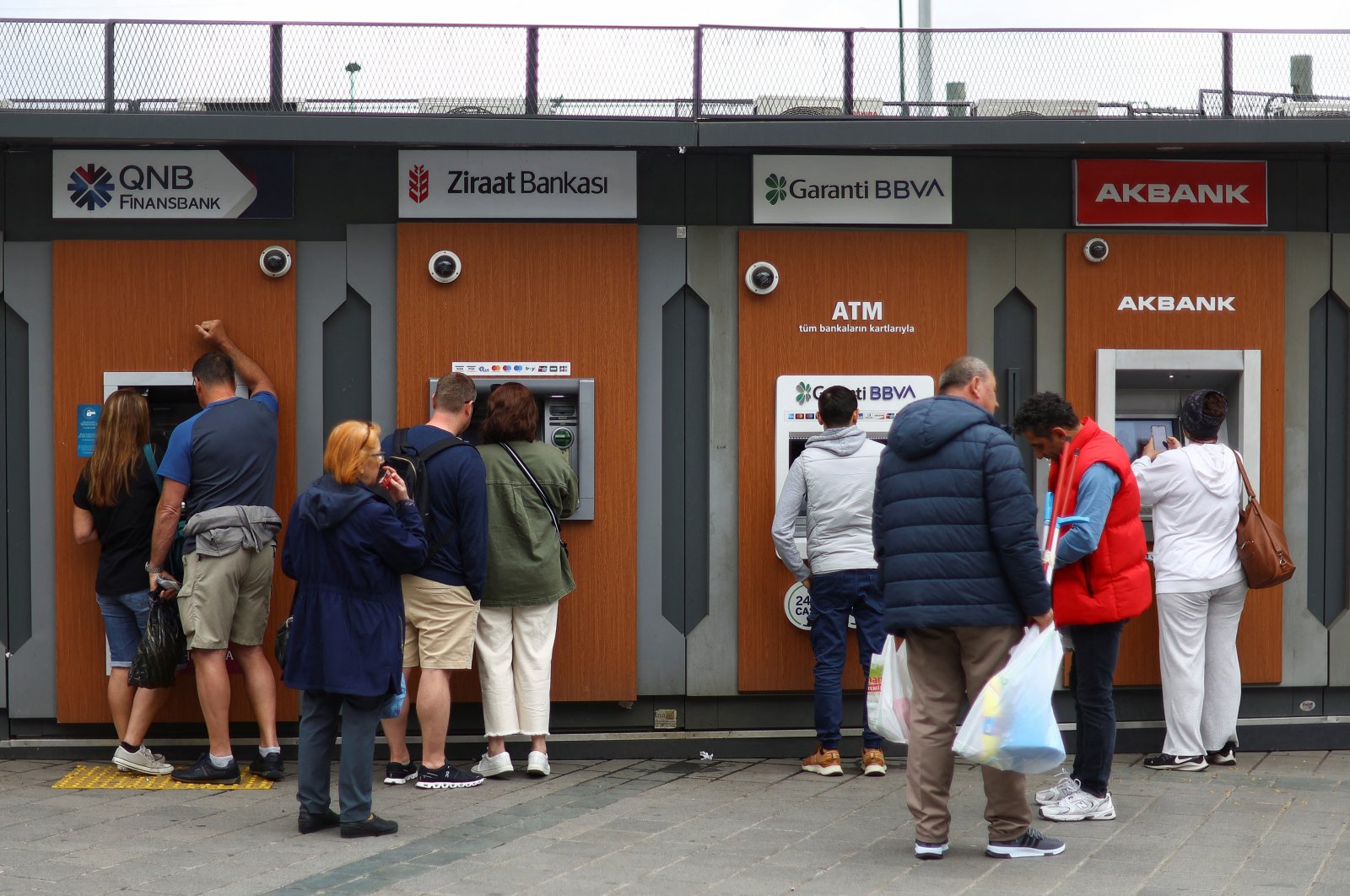Fitch sees strong investor appetite amid lower risks for Turkish banks
Credit rating agency Fitch said on Wednesday that Turkish banks’ foreign financing risks have decreased amid improved access to external financing, lower risk premiums and strong capital buffers.
Fitch improved Türkiye’s credit outlook this March, which was quickly followed by an upgrade in the ratings of several Turkish banks.
This was attributed to “increased confidence” after authorities reversed years of loose monetary policy after last year’s general and presidential elections and delivered a series of interest rate hikes to combat inflation.
“We have seen that many Turkish banks have gained significant access to external financing in a very short period of time, especially since the presidential election in May 2023,” said Ahmet Emre Kılınç, Fitch Ratings director for banks.
“This indicates a reduction in risks associated with foreign financing,” Kılınç told Anadolu Agency (AA).
Kılınç attributed the improvement primarily to changes in monetary policy, which have led to a significant decline in Türkiye’s risk premiums.
Since June last year, the Central Bank of the Republic of Türkiye (CBRT) has gradually lifted its benchmark policy rate to 50% from 8.5% and has pledged to tighten it more if there is “a significant and persistent deterioration” in the inflation outlook.
Inflation reached an annual 75% in May, which is said to mark the peak before tight policy and a relatively stable Turkish lira bring relief.
Kılınç pointed out that Turkish lenders have diversified their financing instruments in a short period, starting with Eurobond issuances.
“Investors are returning to the market,” he said. “We have seen not only large banks but also smaller banks issuing Eurobonds, which is a sign of general appetite,” he added.
Over the past year, banks have issued approximately $4.6 billion (TL 148.53 billion) in subordinated debt, according to Kılınç.
Moving forward, he said Turkish banks are expected to act based on opportunities rather than immediate capital or foreign currency liquidity needs.
Adequate capital structure
The significant volume of issuances carried out in a short period, especially on the side of capital-like instruments, has created a supply surplus, according to Kılınç.
He suggested that while the current conditions may continue, banks will likely remain vigilant for new opportunities.
“We do not foresee issuances in the short term at the same pace as we experienced recently,” Kılınç stated. However, he emphasized that banks will continue to seek opportunities to issue in a favorable environment.
He emphasized that the capital ratios of Turkish banks are reasonable and sufficient.
“The newly issued subordinated debts support the banks’ capital, providing a hedge against potential currency volatility. Profitability might decline, but it still supports the capital structure,” said Kılınç.
“Overall, we believe the banking sector’s capital structure is adequate.”
Kılınç explained that the Turkish central bank’s swap agreements with banks have decreased from $58 billion to $18 billion, while swaps with foreign lenders have increased since local elections in late March.
“We are uncertain whether the central bank will change these swap limits hereafter, but there might be some relaxation. This could result in the swap mechanism shifting more toward foreign banks,” he added.
Continued profitability
Kılınç noted that roughly 20% of Turkish banks’ total liabilities stem from foreign financing, with a high short-term debt component posing a major risk.
Foreign exchange deposits remain at high levels despite the recent decrease, he noted, adding that the agency is closely monitoring the course of the foreign exchange-protected deposit scheme.
Authorities have been seeking to gradually phase out the scheme, known as KKM, which has weighed heavily on the budget.
It was launched in late 2021 to help reverse dollarization and support the lira. It sought to encourage people to keep their savings in lira through guarantees to compensate for losses from a decline against hard currencies.
The deposits under the scheme have fallen by around $60 billion to $66.7 billion as of late May, from as high as $126 billion last August, Vice President Cevdet Yılmaz said on Monday.
Yılmaz said the program was intended as a temporary measure and that it had fulfilled its role.
Banks have sufficient foreign currency liquidity, but Kılınç said the high levels of foreign exchange deposits and KKM remain a risk factor.
“Withdrawals from KKM are ongoing, but if the demand shifts to foreign exchange instead of Turkish lira after the withdrawal, it could pose a risk. Because the primary goal is for withdrawals from KKM to transition into lira,” he stated.
“To mitigate risk, the central bank aims to direct a portion of these funds into lira through its conversion rates, rather than having the entire amount move into foreign exchange.”
Kılınç emphasized that the reduced risk of government intervention in economic policies is significant for sustainability.



